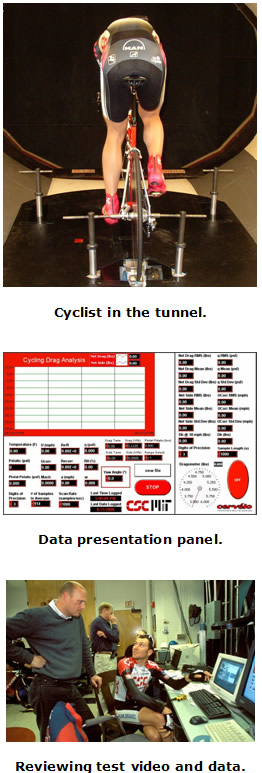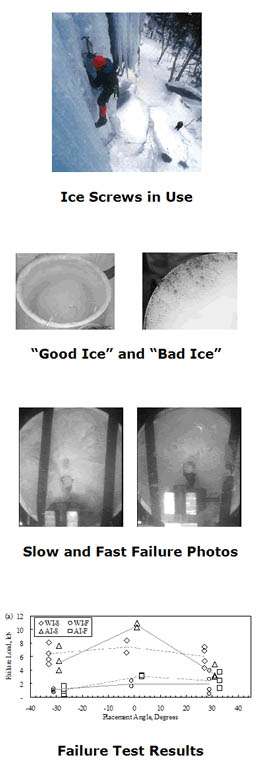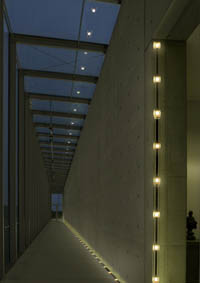
| Welcome to the Club of Amsterdam Journal. Some thoughts and issues related to our next event: Sports are especially open to (technological) innovations. To what extent technological innovation will lead to performance enhancement among sportsmen during big tournaments? What are the opportunities in this field and what is being undertaken to realise technological innovations in sports? Sport facilities: an environmental disaster. Waste, energy use and noise What will be done to turn them into models of sustainability? Security: Will sports facilities become a terrorist target? Join our next event – share your thoughts March 25 the future of Sports Felix Bopp, editor-in-chief |
sports innovation @ M.I.T.
Why Sports Products?
From a pedagogical perspective, sports products are an ideal topic. Sports products typically involve one- to two-year product development cycles thus, students can be involved through the entire product development process sports development projects lend themselves to small student teams projects are of manageable size that students see as an entire system Students participating in the program may well see products they’ve developed marketed (and their friends purchasing them) prior to graduation!From a business perspective, the sports industry is always hungry for new products and ideas. Industry leaders recognize the commercial potential of innovation, particularly those that apply advanced aerospace technology.
Some projects
” Optimizing Cycling TT Performance”
Seconds separate the top finishers in cycling time trial events. Since 70% of a rider’s power is used to overcome aerodynamic drag, reducing drag results in “free” speed. Cyclists have been tested in wind tunnels, but test facilities had not met the needs of all the stakeholders.

Results:
Total project immersion was used to uncover the user needs. Interviews with team directors, professional cyclists, and bike manufacturers, were coupled with in tunnel testing using a variety of prototype test environments. From these prototypes, a test system was developed to meet the needs of each of these stakeholders.Innovation:
A special bike test structure was developed to minimize its interference on the bike/rider. A data acquisition system was installed that records, analyzes, and presents data specifically needed by each stakeholder. A rider feedback system was developed that provides video feedback of the rider’s position along with real-time data so that the rider can observe the effect of subtle position changes on his/her drag.
“Ice Screw and Ice Interface Failure Analysis”
Ice climbers use ice screws to secure their safety ropes to ice walls. Climbers experience a variety of different ice types in the field. often leading to unsafe conditions. Due to lack of trust in the protection, the word from the ice wall is “don’t fall!” The project objective was to develop a means of testing ice screw performance in various ice conditions in a controlled laboratory environment.

Creating ice: “Good ice” samples, typical of clear solid ice seen in the field, were created by freezing normal tap water into PVC containers. “Bad ice” samples, typical of aerated ice seen in frozen waterfalls were created by freezing a 3:1 combination of normal tap water and carbonated water.
Ice screw testing: 43-13 cm, hollow, heat-treated steel ice screws were inserted into one of the two ice types at placement angles of –30º, 0º, or 30º. The screws were pulled out at load rates of either 25 mm/s (fast) 0.25 mm/sec (slow).Results:
A lower load rate was found to increase the failure load, so climbers should use more ice screws to increase safety. A placement angle of 0º was found to be best for both ice types. High-speed video footage provided evidence of a qualitative difference between the failure modes of the fast and slow load rates. Fast loading rates caused the ice screw to swiftly “slice” its way out of the ice. The failure mode at slow rates was characterized by the ice screw suddenly “popping” out of the ice.
Next Event

the future of Sports
Thursday, March 25, 2010
Registration: 18:30-19:00, Conference: 19:00-21:15
Location: Hogeschool van Amsterdam – School of Sports and Nutrition, Auditorium, Dr. Meurerlaan 8, 1067 SM Amsterdam
The speakers are
George de Jong, Director, InnosportNL
Technology & Innovation
Jan Tilmans, Director, Sportstil Agency
Sport Facilities & Sustainability
Marco Kooiman, Program Advisor, Olympic Ambitions, Topstad Amsterdam
Amsterdam’s Olympic bid in 2028
moderated by John Mahnen, Business Development Manager, Heg Consult
Lumiblade OLEDs
Philips is offering lighting designers, architects and creatives from all disciplines a unique OLED technology ‘starter kit’, so that they can discover for themselves why OLEDs are going to be the lighting sensation of the coming years. This kit includes an information pack and DVD explaining the technology behind OLEDs and outlining possible future applications. It contains several OLEDs of various shapes, structures and colors, enabling people to experiment with and experience the amazing effects of OLEDs for themselves. More details about how to use the OLED samples are included in the information pack.
Spectacular new range of lighting effects
OLEDs are very versatile and can vary incredibly in color and brightness. What’s more, they can create homogeneous light surfaces in almost any shape, pattern, vibrancy and color. Thanks to this versatility, OLEDs can create a spectacular range of new and innovative lighting effects that can enhance the look and feel of almost any environment in fresh and innovative ways. And now, as a result of significant investment and several technological breakthroughs, Philips’ OLEDs will shortly become commercially available. As a result, we can expect designers, architects and consumers to be using OLEDs in a variety of contexts over the next few years.


Club of Amsterdam blog

News about the Future
 Ecological Forest Train The Ecological Forest Train of the Iguazu National Park is used as alternative transportation and is powered by gas – a system without environmental impact. It was created exclusively for this Park; its design takes into account the special characteristics of the weather and the surrounding leafy nature. The train is roofless, for the visitor to be in direct contact with the environment and to live the experience of a ride in the middle of the forest, perceiving the aromas, weather changes and the sound of the wood. The train travels at 20 km/12 miles per hour in order to avoid running over an animal and it is powered by liquated petroleum gas for a lower environmental impact. The train can accommodate 50 passengers per coach. It was brought specially from England where it was designed by Alan Keef Ltd., a company which specializes in excursion trains and has built highly successful transports for parks throughout Asia and Europe. Technical information: fauna corridors, biodegradable oil, engine wash system, railroads maintenance, facilitate transportation; the new railroad plan used the old road safeguarding the biggest trees. |
 Soundglass Japanese researchers have developed a revolutionary type of glass that can show visually how loud a sound is and which direction it is coming from on a transparent display. Unlike ordinary sound measuring instruments, the Soundglass shows information on sounds emanating from the area that can be seen through the transparent display. Its applications include monitoring noise at electric power plants and other facilities to check for anomalies. |
Recommended Book

The Price of Perfection: Individualism and Society in the Era of Biomedical Enhancement
By Maxwell J. Mehlman
Few would question the necessity of artificial limbs for amputees. But what of surgery to lengthen the legs of children who are merely shorter than average? Hardly anyone would challenge the decision to prescribe Aricept to people with dementia. But is it acceptable to give the same medication to airline pilots seeking sharper mental focus on long-haul flights?
Humans have engaged in biological self-improvement since long before recorded history, from the impotence-curing wild lotus brew of the ancient Egyptians to the herbal energy drink favored by early Olympians. Now biomedical enhancements are pushing the boundaries of possibility and acceptability. Where do we draw the line? How do we know the true ramifications of pioneering medicine? What price are we willing to pay for perfection?
Maxwell J. Mehlman’s provocative examination of these issues speaks to fundamental questions of what it means to be human. He finds public officials ill-equipped to handle the ethical, scientific, and public policy quandaries of biomedical enhancement. Instead of engaging difficult questions of morality, access, fairness, and freedom, elected officials have crafted toothless and counterproductive laws and regulations.
Mehlman outlines policy options to boost the societal benefits and minimize the risks from these technologies. In the process, he urges the public to face the ethical issues surrounding biomedical enhancement, lest our quest for perfection compromise our very humanity.
Transformative Thinking

by Michael Akerib, InnovaX
The future will forever remain unknown to us. As time passes and we approach it, just like the horizon, it moves ever further away. Knowledge and analysis gives us occasional glimpses; our feelings and fears lead us forward or hold us back; our intuition leads us into choices we are either able to contribute to or simply imagine and perhaps through our participation in the collective unconscious help forge.
This column plans to explore some of the issues that are shaping the future in an unorthodox manner – blending facts, visions and dreams, in other words both hemispheres of our brain.
We will be looking at some major innovations, but above all we will reflect on the stream of life in attempting to guess its direction and perhaps throw a stone or two in it or build a small dam. We will attempt to be less tied to the present than we naturally tend to be so as to allow our eyes to look into the distance in an attempt to apprehend the coming changes.
Our explorations will not limit themselves to technology, innovation or business models but will also cover changes in the way we perceive ourselves and the society we are constructing.
Perhaps the uncertainty of our future, the radical changes it will bring about, will appear to be less dramatic and less frightening, but stem out of our imagination and our will.
Let us transform the way we think, let us move into the future.
No doubt the most crucial question about our future is the involvement of the state into our lives both directly and indirectly.
The indirect impact has been felt particularly in the banking and insurance sector over the last year or two with governments, and in some cases foreign sovereign funds, stepping in to selectively save some of the institutions through guarantees, massive injections of cash and transfer of ‘junk’ paper. These actions have created such a large sovereign debt that the financial stability of several states has been severely shaken and government default has become a credible threat.
Debt management has become such a central issue that it severely constrains the power of governments to implement their policies, whatever the platform and promises on which they were elected.
Social spending and reforms will inevitably be curtailed in situations where demographic changes require, on the contrary, substantial increases in budgetary allocations in selective areas such as health care for the aged. The extremely fast pace of technology requires constant updates to research and teaching facilities lest the race of technological dominance is lost. That too, requires an abundance of capital. Creating a knowledge society does not come cheap either. Funds will also be needed for security reasons both in the developed countries and in foreign military undertakings.
Foreign aid will be reduced to a trickle leaving millions undernourished, undereducated and converting some of them into illegal migrants and the vast majority into a cheap labor pool producing cheap, and probably shoddy, goods that will help counter inflation.
The modern state is a complex system in which policy is born out of conflicts of interest of a multitude of parties – industry, financial services, commerce, trade unions, civil society, etc. As the relative strength of each party varies, policies change leading to an unpredictability of the state’s actions. As government interference increases, so will uncertainty, and apparent irrationality, and therefore investors will stay on the side lines as they abhor uncertainty.
As the preference of government will vary, so will the fortunes of specific groups. Inevitably the clear winners will be those with the strongest voice, overruling majority consent. The others will have to accept increased pressure of taxation, inflation, exploitation, unemployment and pauperization.
To avoid social upheaval, the state will have to increase controls and we may well move gradually into an ever more invasive society on the scale of the individual. The social alternative of providing bread and games will not be affordable to already highly indebted governments.
Is the era of democracy drawing to an end or are there options available to governments to avoid the unfolding of such a dire scenario.
In countries where the tax level has not already reached the point where the owners of capital feel unjustly burdened and are prepared to leave the country – or at least transfer their holdings to countries with more favorable tax systems – governments can increase tax receipts. This is particularly true of the United States.
Encouraging risk-taking intrepid entrepreneurial individuals to lead their countries down new paths of prosperity and freedom without making financial demands on government budgets will not prove easy. Cohabitation of public and private enterprise is a difficult undertaking as the very notion of ownership and control is put into question – it must remain with private capitalists rather than be a tool for civil servants to exercise their discretionary power. Mentalities must change – economic growth and development must be the name of the game, not political power and deficit management.
Governments face a moment of truth – following a restrictive policy or establishing a coherent growth strategy to reduce debt by allowing their countries to generate growth and wealth. There should be no hesitation on their part.
(There has been a mix-up in the original, mailed version of this Club of Amsterdam Journal. We apologise! – Editor, Club of Amsterdam Journal)
Futurist Portrait: Jonathan C. Peck

Jonathan Peck is President of the Institute for Alternative Futures (IAF) and its for-profit subsidiary, Alternative Futures Associates (AFA). Trained as a futurist and political scientist, he provides a wide range of consulting, speaking and facilitation. Mr. Peck also designs and directs research programs and projects that help a variety of organizations use futures studies. His work fosters visionary leadership, scenario-based strategic planning and creative learning opportunities for a diverse clientele. As a consulting futurist, Mr. Peck develops techniques for transformation that enable IAF to serve as an effective change agent for leaders in business and government. He is a certified practitioner of the Myers-Briggs Type Indicator (MBTI), and has integrated psychological concepts from the field of organizational development into futures studies. This combination has proven valuable for facilitating vision, mission and strategic processes that help leaders create change through learning. He regularly consults with boards of directors and senior executives, for clients that include Fortune 500 companies, professional associations and government agencies.
Communications, Health, and Infomatics Intelligence
Jonathan has spent years directing projects on health futures for various clients in the public and private sectors. During this time he also consulted and forecast revolutionary developments for the telecommunications and information sectors. This work made clear that the three industries — communications, health, and information — are converging upon exciting opportunities to create wealth and health simultaneously.
His many projects looking to the future for healthcare systems — from hospitals, professional groups, and associations to multinational corporations in Asia, Europe, and the United States — prepare clients for new opportunities. He has worked on the future of health systems design, mental health care, molecular sciences, and the health-information infrastructures in multiple countries.
Specific studies and projects led by Jonathan have forecast the future of health care professions, markets, and diseases including cancer and AIDS. His expertise has also been applied through consulting contracts with businesses throughout the health care sector.
Key forecasts
Evolution will lead people to higher levels of development, resulting in a new global ethic. A new global ethic will lead to better problem solving, helping us to sustain our current quality of life in a world of up to 10 billion people.
A knowledge revolution will soon transcend, but include, the information revolution we’ve lived through over the past two decades. Web 3.0 is going to give us access to knowledge that will increase learning and improve decision making.
Agenda

Our Season Program 2009 / 2010: | ||
| March 25, 2010 18:30-21:15 | the future of Sports Location: Hogeschool van Amsterdam – School of Sports and Nutrition, Auditorium, Dr. Meurerlaan 8, 1067 SM Amsterdam | |
| April 29, 2010 18:30-21:15 | the future of Music Location: Hogeschool van Amsterdam, Auditorium, Singelgrachtgebouw, Rhijnspoorplein 1, 1091 GC Amsterdam | |
| June 3, 2010 18:30-21:15 | the future of CERN Location: WTC – World Trade Center, Metropolitan Boardroom of Amsterdam In Business, D tower 12th floor, Strawinskylaan 1, 1077 XW Amsterdam | |










Customer Reviews
Thanks for submitting your comment!